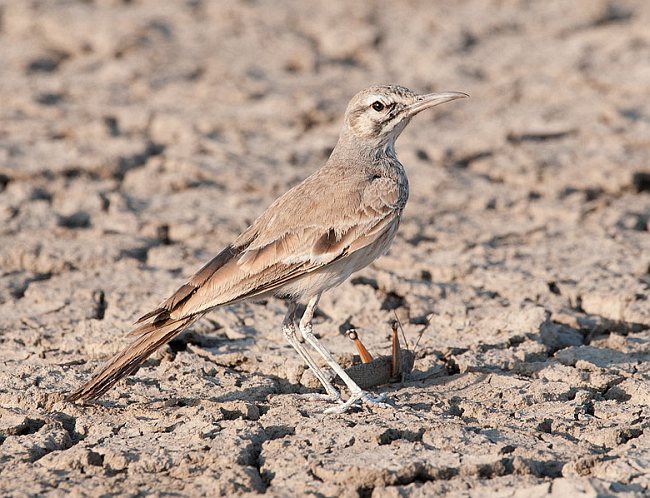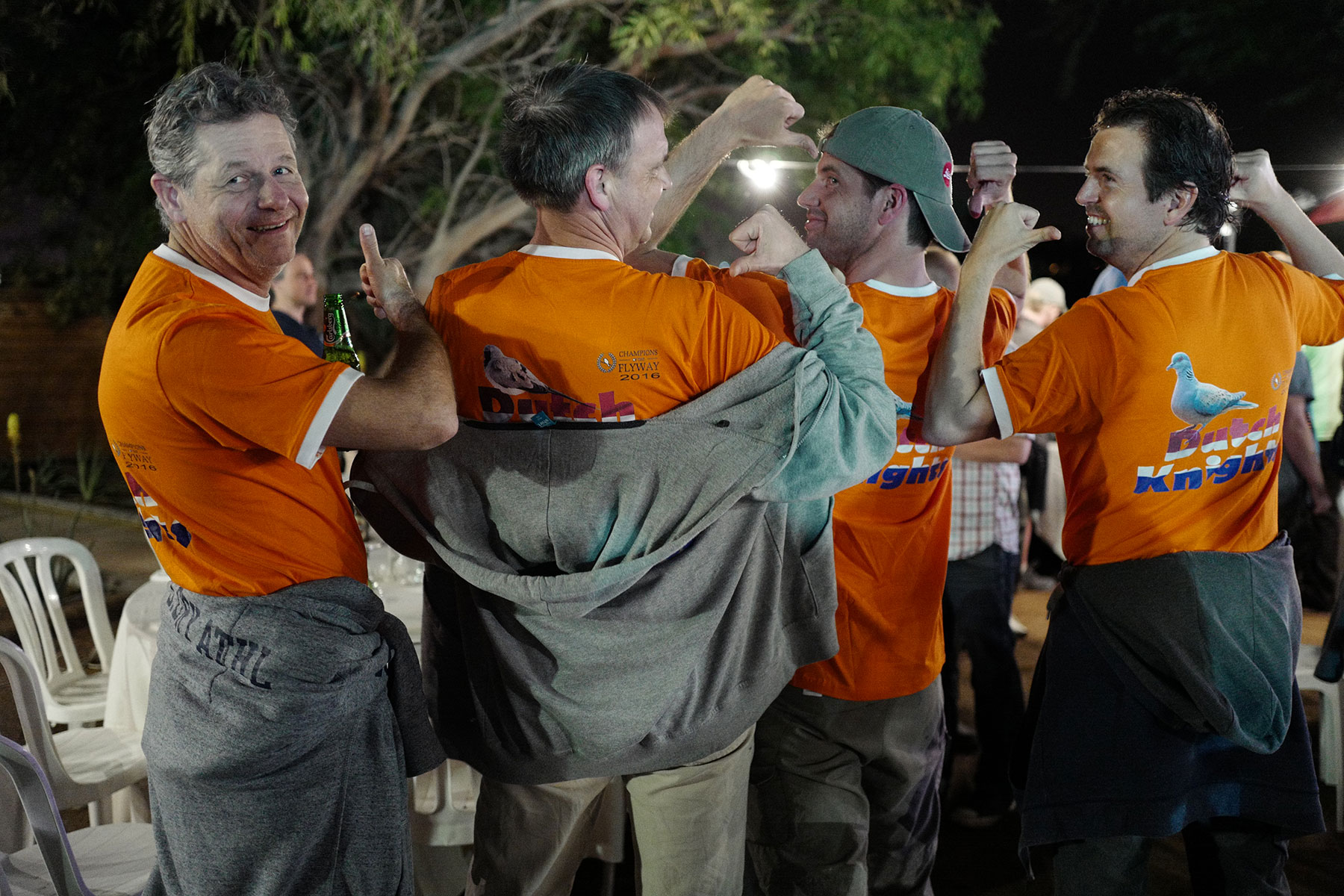Eilat, Israel
11:59pm ….200 bated breaths…one minute to go, the count down starts….seconds tick slow and loud…10 seconds to go …..9,8,7,6,5,4,3,2,1 and……
What is it? New Years Eve? Blast off to Mars?
…The Race begins!
Ummm, race?? At midnight??? Is it a treasure hunt?
“Sort of, we’re looking for birds.”
Alright then, who’s bright idea was this?
“Jonathan Meyrav and Dan Alon”
So why did they think of a bird race that starts in the middle of the night and goes on for 24 hours?
That’s what this story is about.
Jonathan and Dan share a passion. Growing up in Israel, they have been privy to a very special event that happens here, in Eilat, every Spring – The Great Bird Migration.
Birds that have wintered in the warmth of Africa are ready, by March, to return to their nesting grounds in Europe and Asia. They have fattened and prepared, and now the urgent call to head home, has to be heeded. Millions take off on this dangerous, arduous journey. They travel thousands of miles over the Sahara, the Red Sea, reach the Southern end of Israel and funnel through strategically placed Eilat. They come in the millions. Wave upon wave of birds flow endlessly in the sky…half a million White Storks, 18,000 Black Storks, over half a million Steppe Buzzards, 20,000 Steppe Eagles, 90,000 cranes, the entire world population of Levant Sparrowhawks – 60,000 of them; 450,000 Honey Buzzards- 400,000 counted in 2 days in 2015! This natural wonder is what Jonathan and Dan are passionate about.
But this “river of birds” that they want to see, flowing forever over their skies, is now under serious threat.
Every year, 25 million birds are being killed. As they fly past Israel and enter Greece, Cyprus and adjoining areas, they are greeted by guns and traps. They are killed for sport, for the table, and caught for the cage. These brave little creatures that have survived long endless journeys, overcome hunger and exhaustion, have no means of evading bullets and traps. They fall prey to callous, thoughtless humans, all their efforts in vain. They will not breed in the Summer, raise their young, or sing in the Spring. If this continues, the skies will empty and fall silent; the most spectacular show on Earth will be over, forever.
So what do Jonathan and Dan do about it? Organise a race of course!
In August 2013, Jonathan and Dan approached Birdlife International with the idea of a bird race with a difference – a race about birds, for birds, and where the winners are always the birds. The idea was embraced by Birdlife and “Champions of the Flyways Race” was begun.
This year I was fortunate to be invited to witness the event with front row seats and in late March, along with the birds, I arrived in Eilat. For the third consecutive year there was to be a Champions of the Flyway Bird Race. Teams from around the world – Finland, America, England, Spain, Greece, Holland…had arrived and started preparing. Every stone, bush, shrub, tree in the desert, was scrutinised. At first glace the Negev looks lifeless. Vast, hot, with very little shade or water. Few dry looking shrubs are scattered around. All is quiet; the only sound you hear is the scrunching of stones under your boots. Then suddenly you spot a black beetle on long legs scuttling across the sand looking for shelter. A few red stones bob up and down and turn into a female lizard. A glance behind her catches the brilliant blue head of the male Sinai lizard in hot pursuit. A swift movement in the corner of your eye, when focused upon, is a Wryneck, that most cryptically coloured bird, hopping from rock to rock, searching for ants. Fluting notes fill the air – Green bee-eaters, the first arriving European Bee-eaters, Spectacled Bulbuls, Arabian Babblers, White-throats, Scrub Warblers, Olivaceous Warblers – the desert comes alive for the patient watcher. And as you spend more time in it, and study it more, you realize that there are many different areas in the desert with their own unique flora (yes every dry looking bush is a different kind of dry looking bush!) and environment and hence their very own unique fauna as well. Niche areas for niche birds. Even in the desert, with apparently so little to choose from, birds can be picky! Larks will nest in particular shrubs, Warblers will feed on different ones, the Houbara will display in its chosen grounds… and following them the birders will go everywhere!
The teams start arriving well before Race Day. The time ahead is spent in looking for as many species of birds as one can find, plotting routes, strategizing. But again, this is a race with a difference. While every team wants to win and tog up the biggest score, the real winner is not the team that spotted the most birds, it’s the team that worked hard the whole year and collected the largest amount in funds. And while the race is great fun, the purpose is serious and simple – to save the birds, save the flyway, and save the habitat.
Every year hundreds of people around the world are involved. Israeli birders, both old and young, campaign, teach, spread awareness and fight for the remaining habitats to be conserved. Funds raised are given to conservation groups to aid their efforts in educating and stopping the mindless massacre in their lands. The birds do not recognize boundaries and borders and here the birders gather as one world community striving to save the natural heritage of the world for everyone. And it is in the spirit of cooperation that this race is run. Teams are supposed to log in their scores and locations, they are to share their sightings – extra points are given to the team with the most shares- bird sightings are only accepted if seen by 75% of the team members and by another team; ethics of birding are to be maintained, the birds come first, always. Certain rare and vulnerable species like the Desert Tawny Owl and Nubian Nightjar are off the list. We were allowed to view the Lichtenstein Sandgrouse – these very difficult to see birds arrive at a specific pond at a specific time to drink water- but we were warned, if the birds are disturbed and do not drink, you cannot count the sighting!
The days of recce, of dinner parties by sponsors, of team introductions and orientation are over and finally at the stroke of midnight, the race begins! 16 international teams, 25 Israeli teams – out of which 8 teams were made by children – are set to go. Some decide to race for the full quota of 24 hours and set off while others decide to conserve a little energy and catch a little sleep before entering the fray. We observers got caught up in the spirit of the race and formed our own team of “Bus Writers”. As we went around to the different areas, we could see scores of Israeli teenagers birding earnestly, energetically, and working seriously to save their birds. Teams were arriving, sharing, spotting, and leaving for the next destination and the next tick. After a night of birding around the Kibbutz looking for owls and Nightjars, it was time to catch the early desert birds. To the untrained eye the entire area looks devoid of life, in fact it looks like it could not support any life at all. As far as you can see is dry dusty land with a little scrub here and there and hills in the distance. But if you pause, you will hear the trilling song of larks in flight, spot a group of White Storks rising with the thermals, a bush of Spanish Sparrows will erupt as you walk past and a Harrier will glide silently scanning the ground for prey. Then on to the next wadi with different vegetation and different species. A Cream Coloured Courser scuttles around trying to get a belly full before the heat of the day. If you lift your binoculars off him for a minute, you will lose him, his colours blending in perfectly and then its “where is he? …..Behind the stone….err which stone?….the one near the dry bush…..um where exactly? …..Look at the direction I am pointing in, if I lift my binoculars I will lose him too….running to the right, running to the right….ah, got him!” Next stop its Black Caps and Rueppels Warblers and an amazing black faced Thick billed Lark. Another stop and Trumpeter Finches add a dash of red to the colour scape while a flash of grey turns into a Common Cuckoo. The Ramon Crater opens up the land ahead, a vast basin surrounded by the remnants of a mountain chain. A football field at the top is verdant and green and Masked Shrikes swoop on insects like bandits in a heist. Mourning Wheatears pose on stones while Isabelline Wheatears meld with the ground. Warblers flit in the branches and a Blackstart hops between the picnic benches. It’s the hottest part of the day and when all self-respecting birds are taking a breather from the scorching sun, we head to the mountaintops to find the thermal-soaring raptors. Of course they are there, flying in and onwards, endless streams of Steppe Buzzards, and a smattering of Steppe Eagles. A group of dedicated volunteers sits here everyday, with camp chairs, drinks, food, binoculars, scope and clicker in hand, counting the migrants as they flow in. For company they have a very pregnant looking (or perhaps just fat!) female Ibex who comes to share some food. Today they have been given a day off, have formed a team, The Flying Dutchmen, and are busy clicking different species – they togged up a very respectable 171 birds, coming second by just a few feathers! The Ibex looks a trifle baffled and forlorn, missing her free lunch. We have to collect some waterfowl, so to the saltpans we descend. Salty, brackish water pools (there is no accounting for taste) have flocks of Greater Flamingos. Black Winged Stilts act noisy and important, numerous waders – Red Shanks, Green Shanks, Marsh Sandpipers, Kentish and Little and Common Ringed Plovers, 3 Red-necked Phalaropes swim together…all counted and accounted for, time to move next door to IBRCE, the International Birding and Research Centre, Eilat. This beautiful birding station with its water bodies, reed beds, hides for viewing, is a birds’ and birders paradise! One eco-friendly team – the Way Off Coursers – had camped here for the whole day and with zero carbon-footprint had counted 109 species and guided all the teams to the elusive flitting warblers! A coffee break, a walk around and a look at the migrating birds flyway maps and it was beach time. As was the practice every evening, all the teams collected on the sands of the North beach to see the pelagic species. The Brown Boobies sat on their favourite buoy, Slender-billed and Black headed Gulls bobbed in the water. A flock of Oyster Catchers passed by, Spoonbills flew over us joined by Glossy Ibis with their downward curved beaks. We wait for the endemic White-eyed Gulls to fly in – they birds spend the day feeding in the Jordan and come to Eilat for the night! It’s almost dusk, time for the Sandgrouse. Around a hundred birders settle on the slopes of the pond. Sit down, sit down, stay quiet are the urgent whispers. As the sky darkens we wait. And suddenly, plop plop two Lichtenstein’s Sandgrouse land at my feet! If I stretch my arm I can touch them. I stop breathing and wait while the male looks at all these new still boulders lining his pond. Finally he is half convinced that there is no threat and slowly he and the Mrs. waddle down to the water and drink. They rest awhile, four more Sandgrouse also take a long drink and then with a flap they take off and vanish in the night. A long collective inhalation and then everyone starts talking at once – “Did you see that? Amazing!! It was looking right at me I was scared to twitch!”.
At the end of the long night and day, dinnertime at the hotel is a raucous affair. Teams are catching up with each other. Various adventures and misadventures are being recounted, the missed sightings of common birds is rued and some are still plotting to make use of the last few hours and catch the nocturnals they had missed!
The next morning, with all the frenzied activity and adrenalin rush of the race behind us, it was time to celebrate. All the participants, organisers, sponsors, more than 200 of us in our Champions of the Flyway t-shirts collect in a happy bunch. Lots of pictures are clicked, contact info is shared, a camera drone is cheered for and then we head in for the awards ceremony.
Flags of the participating countries line either sides of the stage. A very tired and happy looking Jonathan makes announcements, gives thanks, translates, and still does a hundred things together! The Mayor of Eilat gives a speech promising support; Patricia Zurita the CEO of birdlife International expresses her great joy and happiness at seeing the event. What we are all truly celebrating and feeling is the spirit of the race – the motivation, the whole-hearted participation, the coming together of the world community to champion a cause – to keep the “River of Birds” flowing in the skies! And when Bill climbs on the stage, guitar in hand, and sings along with the Israeli children the Champions of the Flyway anthem, it touches every heart and uplifts every soul.
Records have been verified and tallied and it is time to announce the winners.
Champions of the Flyway – The Zeiss Arctic Red Polls with a count of 174 species
Guardians of the Flyway – for raising the most funds for the cause
International winners: The Zeiss Bird-watchers Digest Way-Off Coursers
Israeli winners: The Terns
Knights of the Flyway: special award for the team that did the most for the project before and during race day – The Zeiss Bird-watchers Digest Way-Off Coursers
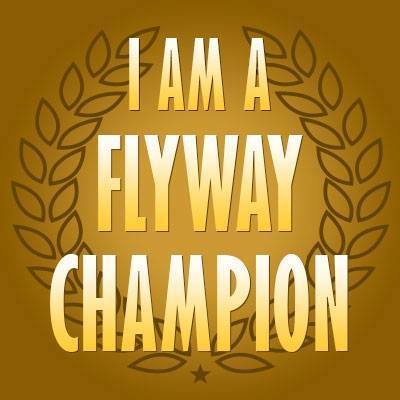
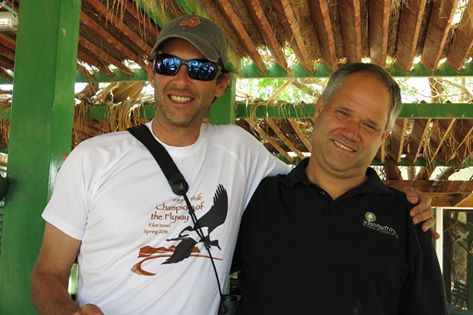
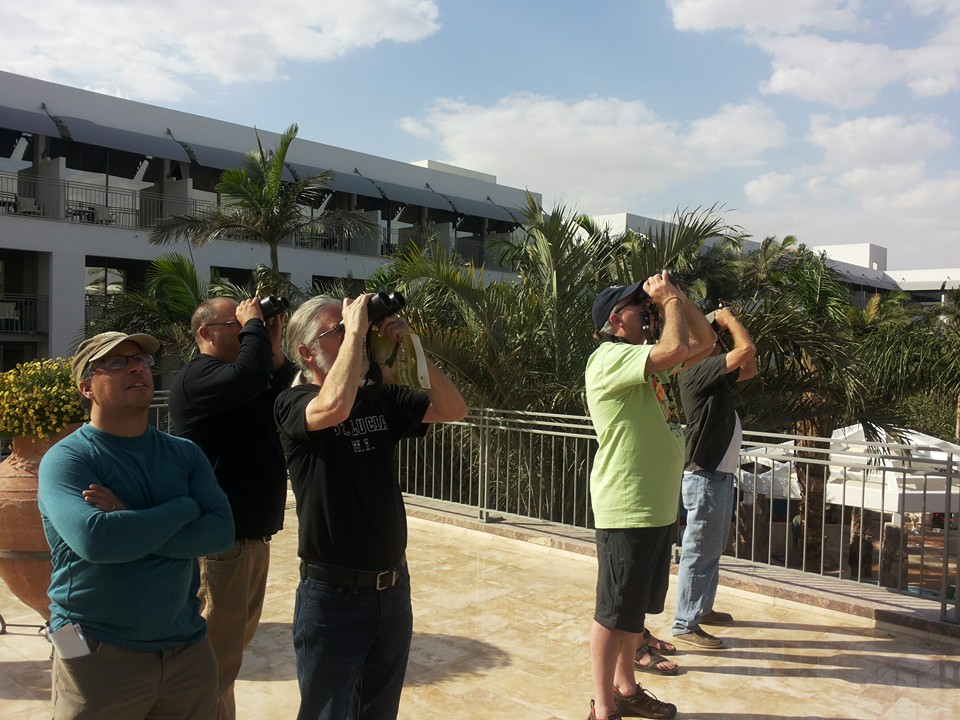
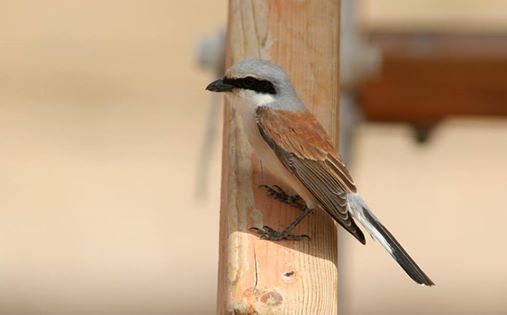

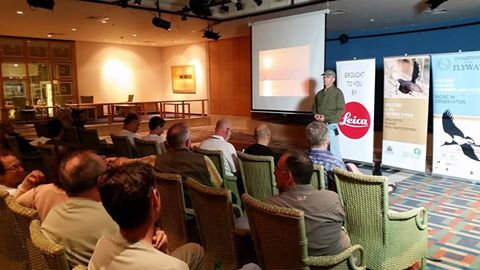
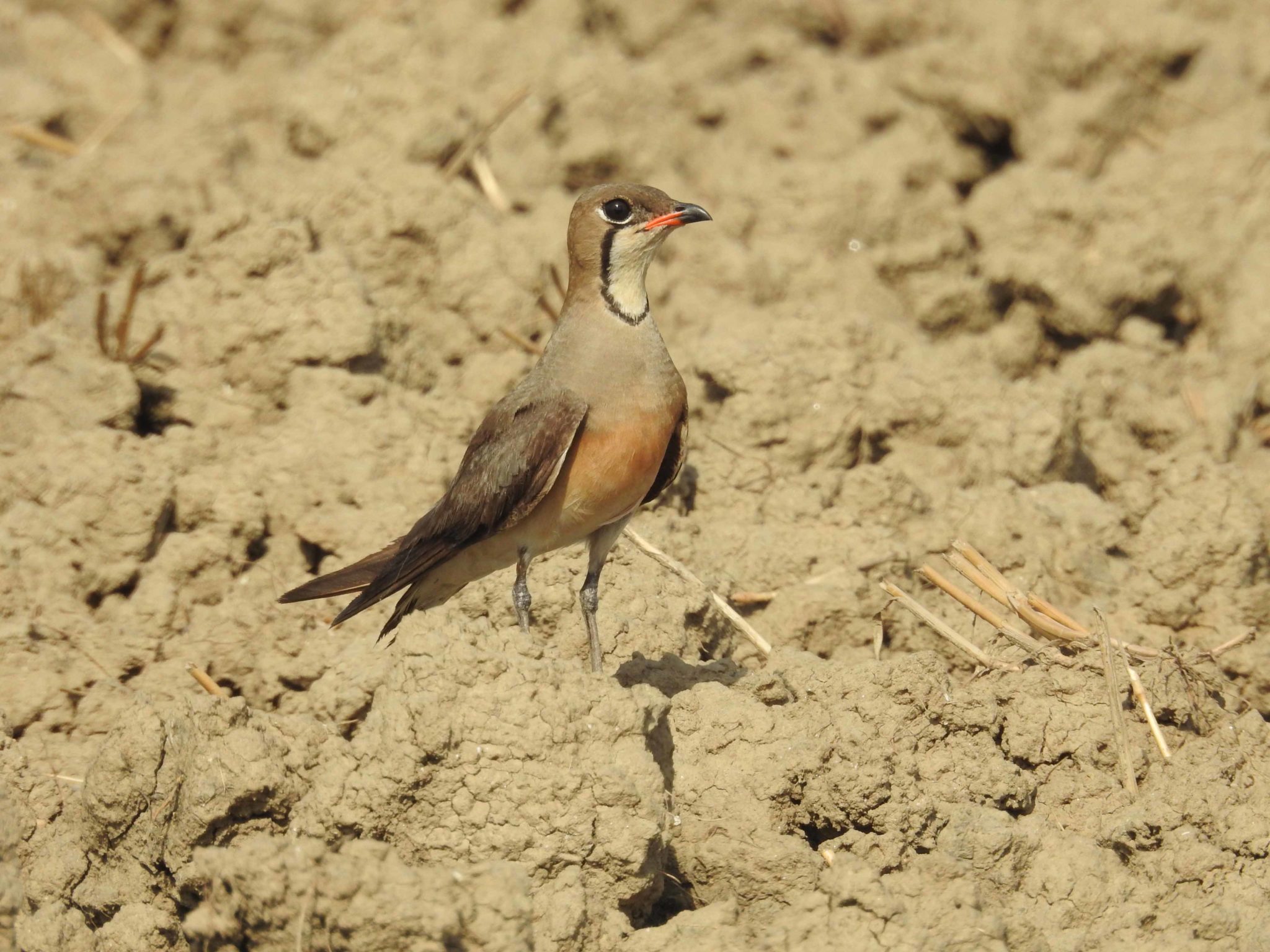
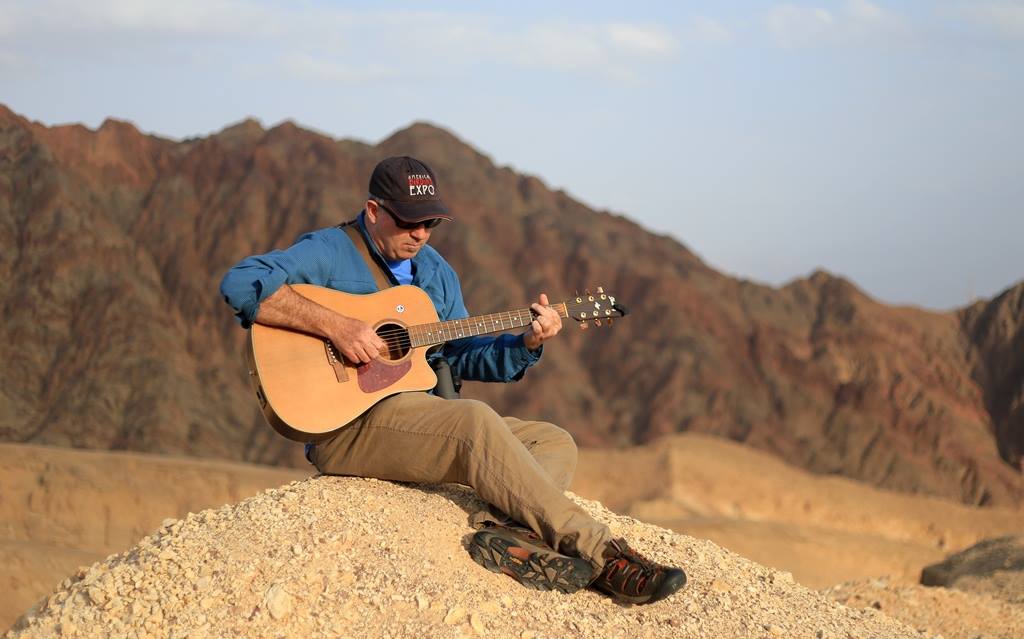

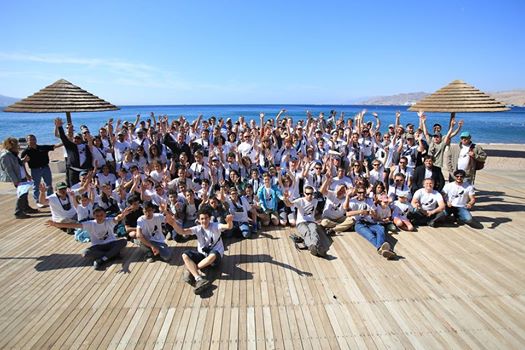


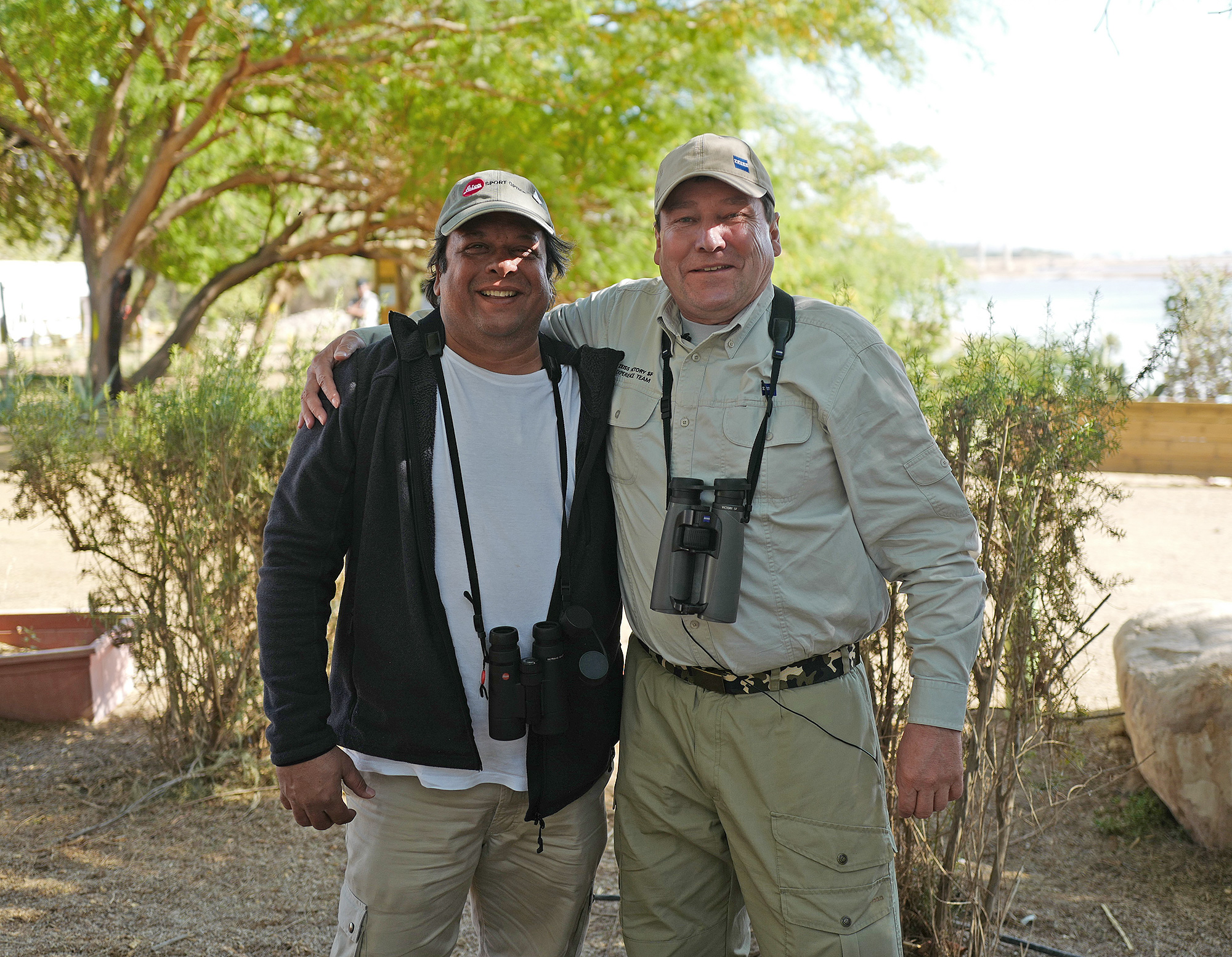
A whopping total of $67,000 has been collected and a cheque given to the Hellenic Ornithological Society to work towards ending the illegal killing of Turtle Doves and the trapping of song birds.
Allow me to finish this story with another little story – the story of the Little Princess. In 1994 a White Stork was fitted with a satellite transmitter. From then on her every move was recorded. She bred in Louburg, Germany, finding an able partner in Jonas. In August after successfully raising chicks they would separate, Jonas flying south through Spain and our Little Princess taking the eastern route over Syria, Israel, Egypt and flying further south into Africa where she would winter. They would both meet again in Louburg in the summer. One year the Little Princess got delayed in her return. Jonas had not waited; her mate and nest had been taken over by a young upstart. There was much wailing and beating of the breast, many recriminations but to no avail. That year, the Little Princess did not breed. The next year she returned early and found a new gallant, a new prince Charming promptly named Prince Erik. The happy couple quickly set up nest and successfully bred and raised 3 chicks. For 12 years the Little Princess carried her 35 gm. transmitter. She flew over three continents, 20 countries in Africa, averaging 150-300 km per day till she reached her destination in 4 weeks. She bred and raised many young. On 23rd December, 2006, she died, of natural causes, in a farm in South Africa.
Her successful adventurous life, its long journeys, was only possible because her flyways were safe. Her resting and recuperating grounds were safe. Her breeding grounds were safe. Let us keep it that way. Let us make many more heart-warming stories together. Let us meet again next year, same time, same place. Come join us, spread the word, do your bit, become a Champion of the Flyway!
Images from Nik and the COTF Website
